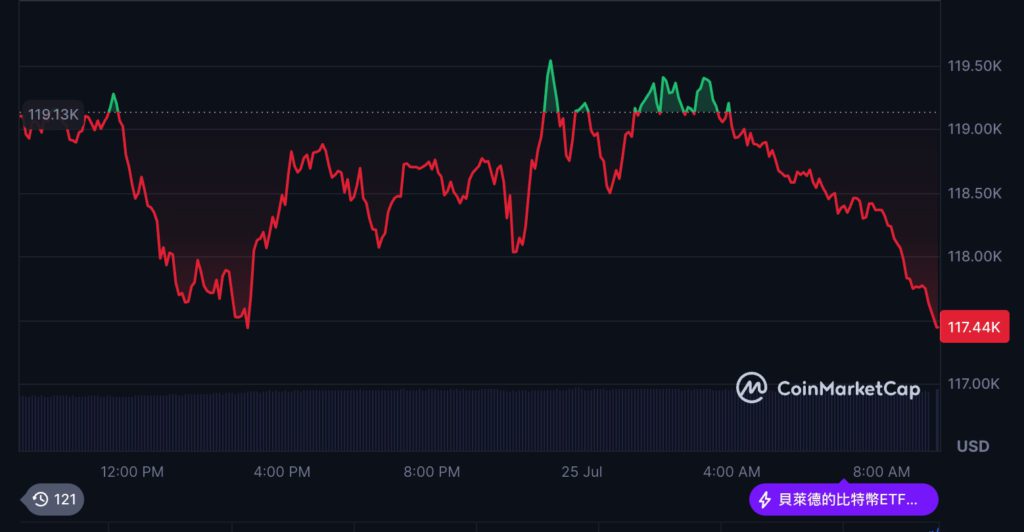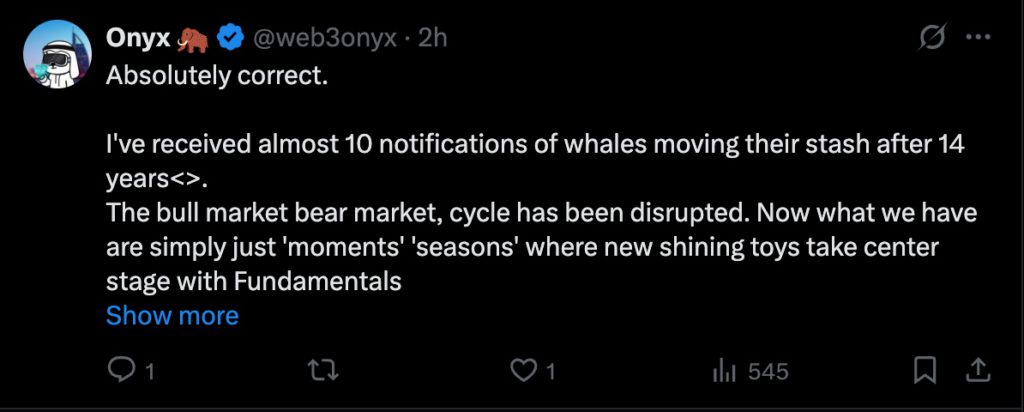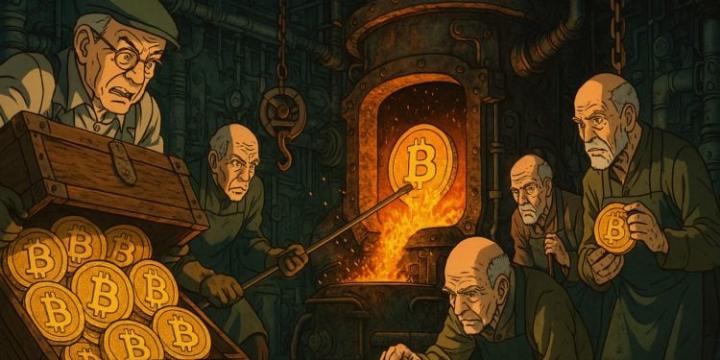CryptoQuant CEO Ki Young Ju this morning proposed the view that "Bitcoin Cycle Theory is Dead," focusing on potential changes in market structure and their profound impact on trading behavior and investor psychology. (Previous context: Dormant for 14 Years, "Satoshi Era" Bitcoin Whale Transfers 80,000 BTC to Galaxy, Selling at the Peak?) (Background supplement: 14-Year-Old "80,000 Bitcoin Whale" Preparing to Sell and Dump? Already Transferred Over 10,000 to Galaxy Digital)
Bitcoin briefly rose above $119,500 last night before dropping again in the morning, currently trading at $117,440, down about 1.2% in the past 24 hours. Ethereum is challenging to return to $3,700, currently at $3,685.

At this time, CryptoQuant CEO Ki Young Ju earlier proposed the view that "Bitcoin Cycle Theory is Dead."
He stated that his previous predictions were based on the "whale accumulation - retail follow-up" cycle theory, but this model no longer applies. With institutional funds entering the market, the old market structure is being overturned, and Bitcoin's price volatility, trading strategies, and investor psychology are changing accordingly.
The traditional Bitcoin cycle theory believes that when large holders (whales) start accumulating Bitcoin in large quantities, it is a good time to enter; and when retail investors FOMO follow, it means the bull market is approaching its end.
However, Ki Young Ju pointed out that in this bull market, the Bitcoin sold by old whales is not flowing to retail investors, but being acquired by a new generation of long-term institutional investors. He candidly admitted on X: "My mistake was ignoring this structural change, and past bull market predictions are no longer accurate."
This view has been acknowledged by many in the circle. Onyx noted that recently, multiple Bitcoin funds dormant for 14 years have started moving, disrupting the traditional bull-bear cycle. The market now seems more like a "moment" or "seasonal" rotation, driven by new themes.

Institutional Funds Entering, Cycle Theory Failing?
Another user added that ETFs and compliant funds have absorbed over 900,000 Bitcoins this round, far exceeding whale selling volumes, and stabilizing prices around $120,000. Although super whales continue to sell, institutional buying power is obvious, reducing volatility and diluting the significance of short-term trading.
However, some analysts believe the cycle theory has not died but evolved into a new pattern of "long-term giants redistributing chips," with the real change being participants' time preference.
Dormant Whale Sells Again
Coincidentally, last night, @whale_alert detected a Bitcoin address dormant for 14.5 years being activated again, holding 3,962 BTC, worth about $468 million.
Blockchain data analyst Ai also quickly pointed out that these BTC originally came from "Coinbase transactions" (referring to mining income, not the Coinbase exchange), suggesting this whale is likely an early miner. Currently, the whale has made a small transfer attempt, the first external transfer since January 2011.
Ai emphasized that calculated at a cost of $0.32 per Bitcoin, these ancient Bitcoins have already yielded a return of 370,000 times! While this doesn't mean the whale will definitely sell, with multiple recent whale selling signals but Bitcoin still at high levels, it's worth watching whether institutional investment will continue to drive BTC prices higher.





